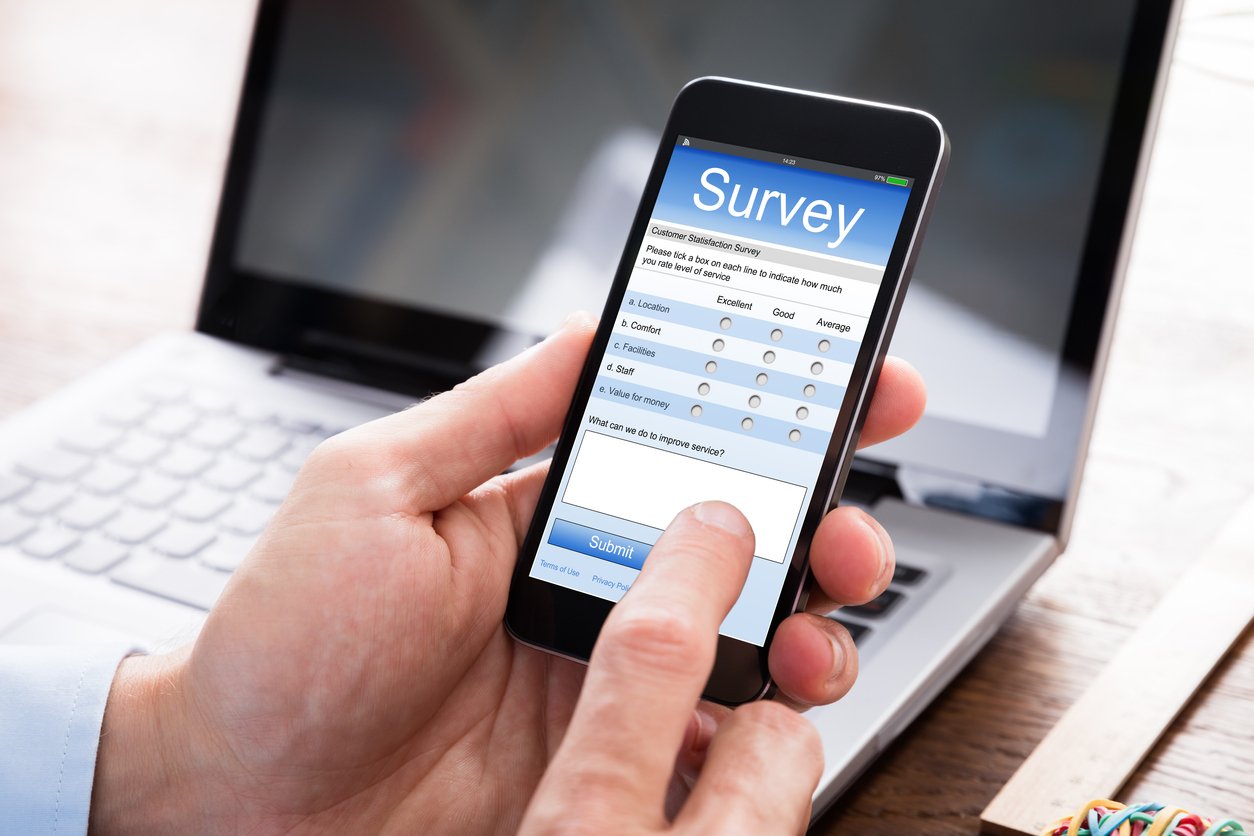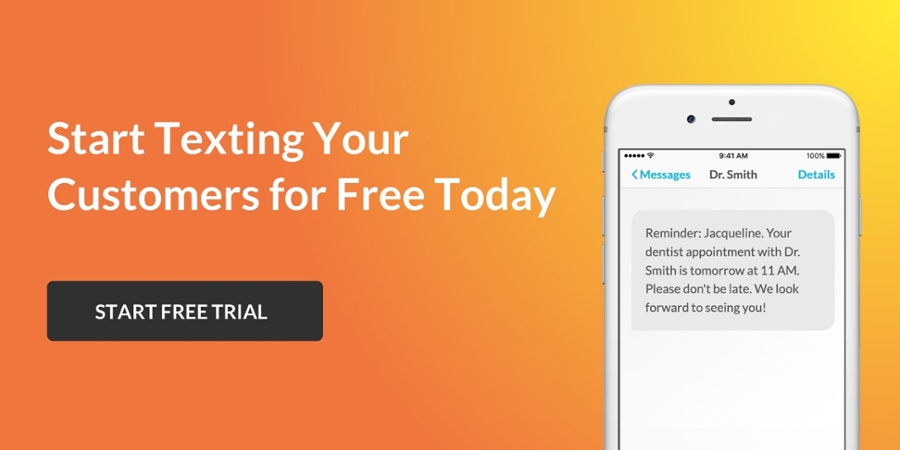Text message surveys and polls are a great way to get fast, efficient feedback. Companies use survey responses to evaluate their product offerings, improve marketing plans, increase customer engagement and drive conversions.
But why should your business send surveys or polls via text instead of traditional methods like email or direct mail?
Text message surveys and polls, like text messages, elicit higher response rates than email or phone calls. Studies show that 95% of all text messages are opened and responded to within three minutes of receipt, making them a highly effective communication channel.
In this blog, we’ll discuss the differences between SMS surveys and polls, the benefits of each and best practices for sending surveys and polls that get high response rates.
Text Message Survey Vs. Text Message Poll
Before you jump in, you should understand a few main differences between text message surveys and text message polls. Which one you choose depends on the kind of feedback you’re seeking.
Text message polls usually ask a single multiple-choice question that gives quick insights into customers’ choices or preferences. Polls require little to no analysis to tabulate results.
Text message surveys are more in-depth than polls, requiring more time on the customers’ end to complete. Surveys provide more feedback because they allow write-in responses to multiple questions vs. choosing predetermined answers to a single query.
Because of their open-ended nature, surveys require analysis to understand the information gathered.
Sending surveys via text can provide valuable feedback in many kinds of industries. A text message survey can reveal:
- Guests’ opinions of hotel amenities
- Gym members’ favorite (or least favorite) fitness classes
- Customer reactions to new restaurant menu items
- Parent feedback after school teacher/parent conferences
- Spa & salon customer input on what services they’d like you to offer
5 Tips for Sending Effective Text Message Surveys & Polls
How can you get the most from your SMS survey efforts? Stick to these best practices to ensure your text message survey responses are useful and valuable.
Pro-Tip: If you’re concerned about TCPA violations and penalties, note that charities and political organizations are exempt from National Do Not Call Registry guidelines. While you must subscribe to the Do Not Call Registry if you call or text customers, most non-profit organizations are exempt. You may be subject to criminal and civil penalties if you have subscribed to the Do Not Call registry as exempt but do not meet exemption criteria.
1. Send Surveys at the Right Time in Customers’ Journey
Connecting with customers at the appropriate time in their journey can make or break your survey or poll efforts. Tweak the “Goldilocks Rule” to determine when to send SMS surveys: Not too soon, not too late… send at just the right time.
Don’t let the fear of missing the “perfect” time scare you. In general, these are great times to send an SMS poll or survey:
- Immediately after a sale or service: Send a brief survey assessing their satisfaction with your products or services.
- Immediately after a customer service call or chat: Make sure customers received the answers or support they needed. Dissatisfied customers should be recontacted or reassured that their needs are important to you. Statistics show that only 1 in 26 people will complain about bad service. The rest remain silent, but 91% will never do business with your company again. Ouch.
- A few weeks after your last interaction: Ask your customers if they would be likely to recommend your products or services to others or if they have any other needs. As Theodore Roosevelt said, “Nobody cares how much you know until they know how much you care.” Make sure your customers know that you are genuinely interested in meeting their needs.
2. Send Surveys at the Right Time of Day
Timing is everything. Business text messages serve a different purpose than texts between family and friends. While customers will likely see your survey or poll quickly, they may not be in the right frame of mind to respond if you send it at an inconvenient time.
Here are a few of the best times to send marketing text messages:
- Weekdays between 9 a.m. and 12 p.m., and between 5 p.m. and 9 p.m.
- Saturdays and Sundays between 10 a.m. and 12 p.m.
- Sundays between 4 p.m. and 7 p.m.
Remember, sending a survey or poll at 9 a.m. on the east coast probably wouldn’t be appreciated by west coast customers! Be mindful of time zones when sending surveys and polling texts. As always, conduct tests to discover which times and days get the best responses from your audience.
3. Simplify the Process for Customers
While customers prefer texts over emails and phone calls, don’t wear out your welcome with long, complicated messages. Make your polls and surveys brief and easy to understand.
Consider sending an introductory text that gives customers a high-level overview of your survey or poll and thank them in advance for their participation.
4. Schedule Consistent Surveys
Limit your legwork by automating surveys or polls at predetermined intervals. Sending surveys at times or occasions that make sense to customers builds trust instead of surprise.
When customers know that you will follow up with them, it creates expectations that help build brand loyalty.
5. Track Every Result
To ensure you get helpful, quality responses, you have to be aware of what works and what doesn’t. Tracking responses, recipients and bounces helps improve response rates and messaging over time.
Measure response rates to different types of questions, survey vs. polling results and timing factors to improve future efforts.
Benefits of Sending a Text Survey
Surveying or polling your customers via phone or email is now passe. As more businesses have adopted texting for customer communication, text message surveys and polls have grown in popularity.
Text surveys have a 10-15% response rate, compared to 7-9% for email surveys - plus, they won’t get sent to an email spam folder.
Benefits of sending text surveys and polls include:
- Speedy customer feedback
- Cost-effective, up-to-date data collection and insights
- Customizable messages based on customer responses
- Increased customer engagement
Send Better Text Surveys & Polls With Textedly
The more information you gather from and about your customers, the better you can improve service and meet their needs through SMS surveys and polls.
As a leading SMS marketing platform, Textedly allows you to build SMS surveys that are useful for:
- Collecting customer feedback
- Gathering insights
- Linking to online surveys
- Streamlining HR communication
Textedly integrates with Google Sheets and Typeform to facilitate easy, user-friendly surveys and polls.
Learn more about how Textedly SMS surveys can help you tap into your customers’ experiences, thoughts and preferences today.








.png)